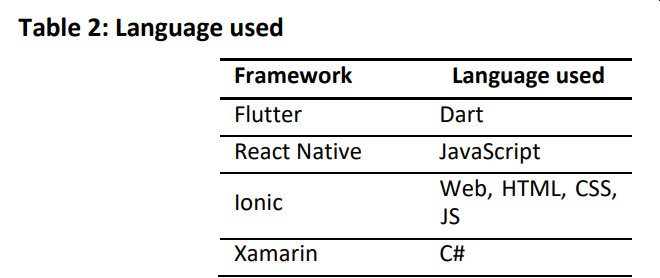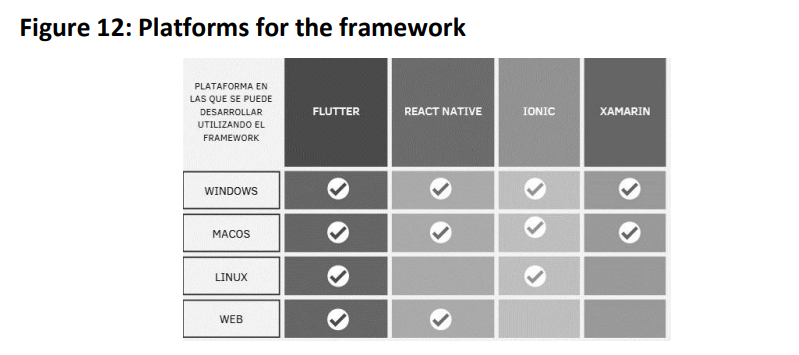Flutter and the revolution of cross-platform development: the Takamaka case
27.08.23
Google introduced Flutter, an open-source software development kit (SDK) for user interface (UI), as an evolution of a previous project called ‘Sky’. Launched in 2018, Flutter brought a breath of fresh air to the world of application development.

This parameter refers to the availability of development tools for different platforms, including operating systems and software
The true strength of Flutter lies in its ability to develop cross-platform applications for mobile, web, and desktop with a single source code. This magic is made possible thanks to the Dart programming language, another product from Google.

plattforms for framework
With Flutter, developers can create visually appealing and responsive applications, offering a user experience similar to that of native apps. This is made possible thanks to Skia, a graphic rendering engine, and the “hot reload” feature, which allows for real-time modifications during development.
Developers can write the code once and deploy it across different platforms such as iOS, Android, and even on desktop operating systems. This ensures not only a time-saving but also consistency in the interface and behavior of the application across different platforms.
Flutter is integrated with Firebase, a file-based database system, which offers a wide range of authentication options and various cloud functions. However, like any technology, Flutter has its pros and cons.
While it offers easy integration with Firebase and rapid iteration, ideal for startups, it also presents some challenges such as vendor lock-in and dependency on updates for new native features from Android or Apple.
References for the article https://namibian-studies.com/index.php/JNS/article/download/874/700
The Takamaka Wallet and the Power of Flutter
Takamaka has leveraged the versatility of Flutter to develop a wallet, showcasing the practical application of blockchain technology. This wallet, available on GitHub, is a tangible example accessible to everyone.
Concurrently, Takamaka has released a development library, allowing for the creation of customized wallets. Both the wallet and the library are distributed under the Apache MIT license.
The decision to use Flutter to develop Takamaka’s SDK offers numerous advantages. Flutter, as mentioned, is a cross-platform app development framework that allows developers to create native applications for various operating systems using a single source code.
This means that with a single Flutter project, it’s possible to reach a broad user base across different operating systems without having to write platform-specific code.
The Takamaka SDK for wallets and the example wallet were developed using Flutter, thus ensuring compatibility across multiple operating systems. Whether you’re using iOS, Android, Windows, MacOS, or a Linux distribution like Debian or Fedora, you’ll be able to access and use Takamaka wallets seamlessly.
This cross-platform approach provides a consistent experience accessible to a large number of users. The choice of Flutter for the development of Takamaka wallets also offers the opportunity to create customized wallets quickly and efficiently.
Stay updated by visiting the website www.takamaka.io. Download and study the project: https://github.com/takamaka-dev/dart_wallet_v2
